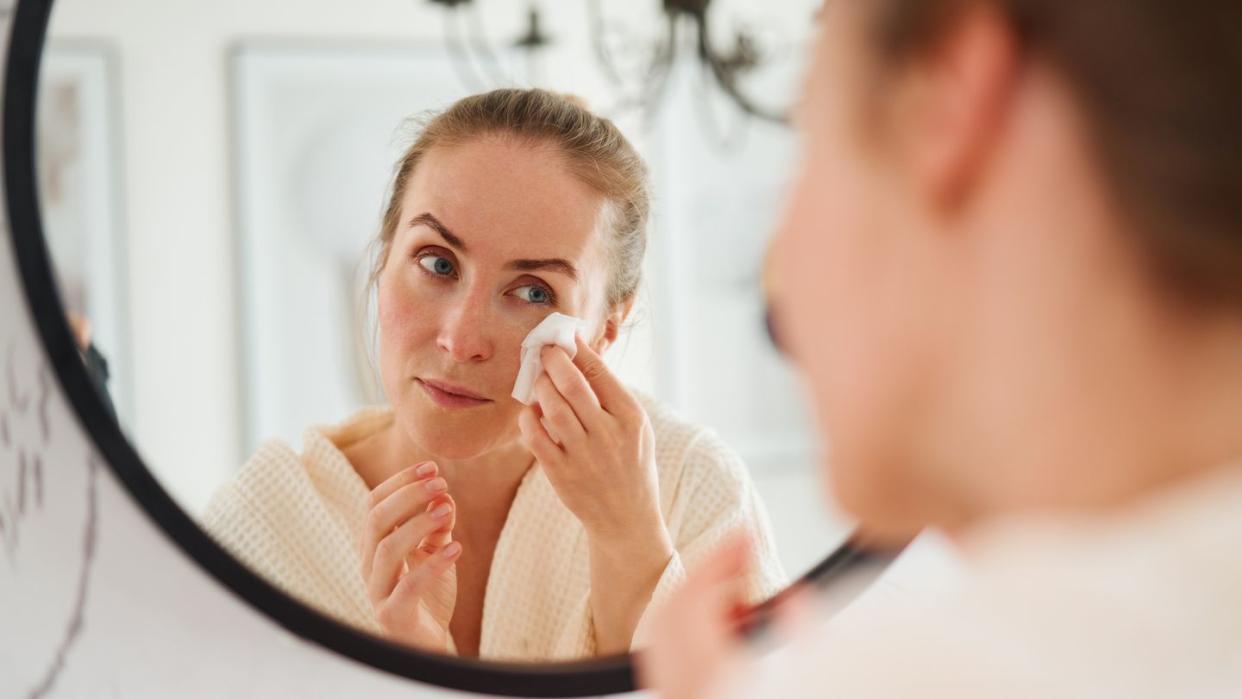What to Know Before Using Salicylic Acid, According to a Dermatologist

[table-of-contents] stripped
Skincare products are replete with technical-sounding, sometimes unpronounceable terms — like kojic acid, azelaic acid, and niacinamide — but the more you learn, the better you'll understand the benefits that they can provide. For example, what is topical salicylic acid and what kind of effects can it have on your complexion?
You may have seen salicylic acid listed as an ingredient in many over-the-counter skincare products, such as toners or acne face washes. If you struggle with clogged pores or a dull complexion, it may be a good option to try. However, before slathering on any skincare product, it’s important to research the formulation and seek professional guidance on whether its ingredients will work with your skin type. Salicylic acid is no exception.
What are the skincare benefits of salicylic acid?
Salicylic acid is a beta-hydroxy acid (BHA), which is an oil-soluble ingredient commonly found in skincare and haircare products. It can be “derived from willow bark or synthesized in a lab,” according to Rana Jaffari, a registered aesthetic nurse at Dripology.
Topical salicylic acid is usually found in products like cleansers, toners, spot treatments, and acne creams. It's the go-to ingredient for those who struggle with breakouts, and it's well-known for its keratolytic (or exfoliating) properties.
“It works by penetrating the skin and dissolving the bonds between skin cells, aiding in the removal of dead skin cells,” Jaffari says. “This can reduce inflammation and promote skin cell turnover.”
It’s important to note that salicylic acid is not absorbed into the skin. Rather, it works at the skin’s top surface layer called the epidermis.
“It removes the rough texture of the skin to provide a more youthful appearance,” says David Li, MD, MBA, a board-certified dermatologist. “It helps to reduce scale on the scalp and on the skin in cases of excess skin buildup (e.g., think psoriasis).”
Salicylic acid is also great for unclogging pores. It flushes out excess sebum to help clear up acne, whiteheads, and blackheads while calming inflammation in the process.
Is salicylic acid safe to use on sensitive skin?
While salicylic acid is safe on most skin types, those with dry, sensitive skin, inflammatory conditions like rosacea or eczema, or autoimmune disorders need to be careful, as Li warns that overuse can lead to excessive dryness and redness.
That said, Li advises that no matter what your skin type, overuse is a general concern. To avoid these potential side effects, he says that products that contain salicylic acid should not be used “more than once daily at most.”
Being mindful of the amount of salicylic acid in your skincare products is just as important as noting how many times a day you use them. If you’re applying a facial product, Li recommends staying in the realm of 2% salicylic acid. However, if the product in question is a more potent treatment for, say, warts, Li says concentrations can get as high as 40% in a single application.
Are there ingredients salicylic acid should/shouldn’t be used with?
Due to its drying properties, Jaffari says not only should those starting to incorporate salicylic acid into their regimens begin with a low dose, but they should also pair the product with a hydrating moisturizer “to avoid further irritation of the skin.” Additionally, because salicylic acid can increase sensitivity to the sun, Jaffari recommends using a daily sunscreen to protect the skin from harmful UV damage.
As for which ingredients do not mix well with salicylic acid, Li recommends avoiding retinol, alpha-hydroxy acids, or other BHAs.
“Things that have an exfoliating effect on the skin should not be combined, as it can cause over-exfoliation,” he says.
You Might Also Like

